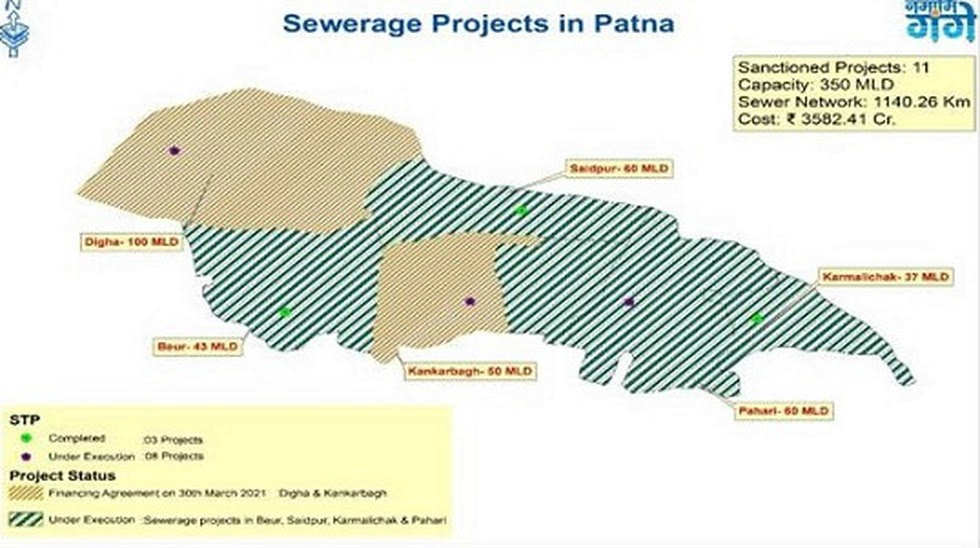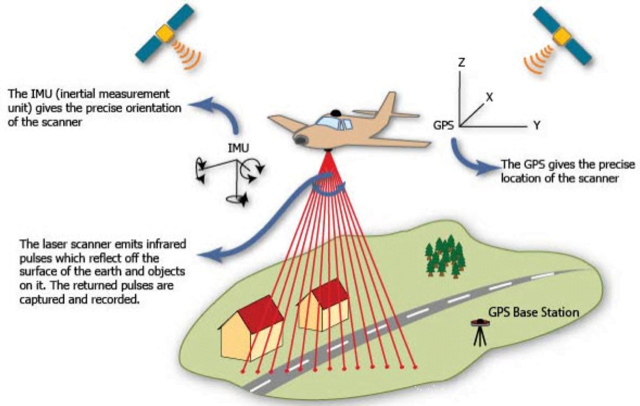IASbaba's Daily Current Affairs Analysis
Archives
(PRELIMS + MAINS FOCUS)
Nacaduba Sinhala Ramaswamii Sadasivan
Part of: GS Prelims and GS – III – Biodiversity
In news
- A group of lepidopterists have found a new butterfly species in India.

Key takeaways
- The species is named Nacaduba sinhala ramaswamii Sadasivan,
- It was discovered in the Agasthyamalais in the Western Ghats
- The new taxon of Lycaenid butterflies belongs to the Nacaduba genus.
- Line Blues are small butterflies belonging to the subfamily Lycaenidae.
- Their distribution ranges from India and Sri Lanka to the whole of south-eastern Asia, Australia and Samoa.
- It is the first time that a butterfly species was discovered by an all-Indian research team from the Western Ghats.
Do you know?
- Lepidopterology is a branch of entomology concerning the scientific study of moths and the three superfamilies of butterflies.
- Someone who studies in this field is a lepidopterist or an aurelian.
‘Investment Opportunities in India’s Healthcare Sector ‘ Report
Part of: GS Prelims and GS – II – Health
In news
- NITI Aayog Released Report ‘Investment Opportunities in India’s Healthcare Sector’.
Key takeaways
- The report outlines the range of investment opportunities in various segments of India’s healthcare sector, including hospitals, medical devices and equipment, health insurance, telemedicine, home healthcare and medical value travel.
- India’s healthcare industry has been growing at a Compound Annual Growth Rate of around 22% since 2016.
- At this rate, it is expected to reach USD 372 billion in 2022.
- In the hospital segment, the expansion of private players to tier-2 and tier-3 locations, beyond metropolitan cities, offers an attractive investment opportunity.
Digha & Kankarbagh Sewage Projects
Part of: GS Prelims and GS-III – Infrastructure
In news
- Financing agreements for developing STPs and Sewerage networks for Digha and Kankarbagh zones of Patna were signed recently.

Key takeaways
- The scope of the project includes development of Sewage Treatment Plants of 150 MLD capacity along with sewerage network of over 453 km in the Digha and Kankarbagh zones of Patna, one of the most populous cities on the banks of the river Ganga.
- This is the first of its kind project which comprises a mix of Design, Build, Operate and Transfer (‘DBOT’) scope and Hybrid Annuity Model (HAM) scope.
- With its implementation, all the sewage zones of Patna city will be covered with sewerage network and sewage treatment capacity.
- It shall help in achieving the objective of the Namami Gange program of preventing any untreated wastewater entering the river Ganga.
Related articles:
Mega development projects under Namami Gange Mission
Unique Land Parcel Identification Number (ULPIN) scheme
Part of: GS Prelims and GS – III – Economy
In news
- The Central government plans to issue a 14-digit identification number to every plot of land in India within a year.
Key takeaways
- It will subsequently integrate its land records database with revenue court records and bank records, and Aadhaar numbers on a voluntary basis.
- The Unique Land Parcel Identification Number (ULPIN) scheme has been launched in 10 States in 2021
- It will be rolled out across India by March 2022
- It is being described as “the Aadhaar for land” — a number that would uniquely identify every surveyed parcel of land and prevent land fraud, especially in rural India
- The identification will be based on the longitude and latitude of the land parcel, and is dependent on detailed surveys and geo-referenced cadastral maps.
- This is the next step in the Digital India Land Records Modernisation Programme (DILRMP), which began in 2008 and has been extended several times as its scope grew.
The Jharkhand State Employment of Local Candidates Bill, 2021
Part of: GS Prelims and GS – II – Policies and interventions
In news
- The Jharkhand government announced 75% reservation in private sector jobs with a salary of up to Rs 30,000 for locals.
Key takeaways
- The bill will treat shops, establishments, mines, enterprises, industries, companies, societies, trusts, Limited Liability Partnership firms and any person employing ten or more persons as the private sector and an entity.
- Every employer needs to register employees on a designated portal who are receiving gross monthly salary or wages not more than Rs 30, 000 — or as notified by the government from time to time — within three months of this bill coming into force.
- No local candidate will be eligible to avail 75% benefit without registering herself in the designated portal.
- The bill defines a local candidate as a person who belongs to Jharkhand and is registered on the designated portal.
- The employer may claim exemption where an adequate number of local candidates of the desired skill qualification or proficiency are not available.
Miscellaneous
Vajra Prahar 2021
-
The 11th edition of Indo-US Joint Special Forces Exercise VAJRA PRAHAR was conducted recently at Bakloh, HP
- The joint exercise is conducted alternatively between India and the United States.
- Objective: To share the best practices and experiences in areas such as joint mission planning and operational tactics and to improve interoperability between the Special Forces
(Mains Focus)
ECONOMY/ GOVERNANCE
Topic:
- GS-3: Corporate Governance
- GS-2: Government policies and interventions for development in various sectors and issues arising out of their design and implementation.
Corporate Governance: Minority Shareholders rights: Tata Vs Mistry
Brief Background of the Tata Vs Mistry dispute
- Cyrus Mistry’s family Shapoorji Pallonji (SP) owns 18.46% equity capital in Tata Sons, the main holding company of Tata Group. 66% of Tata Sons is owned by Tata Trusts, currently controlled by Ratan Tata, the group’s former Chairman
- December 2012–Appointment of Mistry: Cyrus Mistry is appointed Chairperson of Tata Sons Limited.
- October 2016- Removal of Mistry: He is sacked from the post of Executive Chairperson by most of the Board of Directors.
- February 2017– Case filed against Tata Sons: The shareholders vote for Mistry’s removal from the board of Tata Sons during an extraordinary general meeting. Mistry, subsequently, files a suit under various sections of the Companies Act, 2013, alleging oppression and mismanagement in Tata Sons.
- July 2018- Tatas win in NLCT: The Mumbai Bench of the National Company Law Tribunal (NCLT) dismisses Mistry’s plea against Tata Sons. While rejecting his allegations, NCLT rules that the Board of Directors are competent enough to remove him as Chairman. The tribunal also states that it found no merit in the arguments on mismanagement in Tata Sons
- December 2019– Tatas lose in NCLAT: The National Company Law Appellate Tribunal (NCLAT) overturns the NCLT judgment, and states that Mistry’s removal as Chairman of Tata Sons was illegal.
- NCLAT also found that the affairs of Tata Sons were conducted in a manner prejudicial and oppressive to its minority shareholders, namely Cyrus Mistry & his family companies, as well as to the interests of the company itself.
- January 2020- Appeal to SC: Tata Sons and Ratan Tata challenge the NCLAT decision before the Supreme Court saying that the NCLAT verdict undermined Corporate Democracy and the rights of its Board of Directors.
- Subsequently, the Supreme Court stays the NCLAT judgment to reinstate Mistry as the executive chairman of Tata Sons.
- September 2020: The Supreme Court restrains Mistry’s Shapoorji Pallonji Group from pledging its shares in Tata Sons to raise funds.
- March 2021: Final Verdict on the case
What were the allegations/ concerns raised by Mistry?
- Rights of Minority Shareholder’s oppressed: SP Group had also alleged that Tata Sons was being run and operated in a manner which was “oppressive” and “prejudicial” to the rights of minority shareholders. It was alleged that the removal of Cyrus Mistry meant oppression of minority shareholders.
- Article 75 of the Articles of Association of the Tata Group. Article 75 gives the company the right to purchase shares from a minority or a small shareholder at a fair market value. Fearing that the Tata Group may use it to try and buyout the SP Group, the latter urged the company law tribunals and the Supreme Court to not allow Article 75 to be used.
- Decisions disproportionately impacted minority shareholders: Apart from this, the Mistry camp had also alleged that the Tata Group had taken several commercial decisions which did not yield the desired result and thus resulted in more loss for the minority shareholders than the majority shareholders.
What was the decision of the Supreme Court?
- No Entitlement to seat on Board:
- Discussing the rights of minority and small shareholders and their importance in the board of a company, the Supreme Court held that minority shareholders or their representatives are not automatically entitled to a seat on the private company’s board like a small shareholder’s representative.
- This meant that SC set aside NCLAT order and dismissed the appeals of Mistry & SP Group.
- Small Vs Minority Shareholder:
- SC noted that the provisions contained in the 2013 Companies Act only protects the rights of small shareholders of listed companies by asking such companies to have on their board at least one director elected by such small shareholders
- Small shareholders, according to the Companies Act, is a shareholder or group of shareholders who hold shares of nominal value of not more than Rs 20,000.
- Since the Mistry family and the SP Group were not “small” shareholders, but “minority shareholders”, there was no statutory provision which gave them the “right to claim proportionate representation,” on the board of Tata Sons.
- No Right to Proportionate Representation
- SC noted that the right to claim proportionate representation is not available for the SP Group even contractually, in terms of the Articles of Association.
- Neither SP Group nor CPM (Cyrus Pallonji Mistry) can request the Tribunal (NCLAT) to rewrite the contract, by seeking an amendment of the Articles of Association.
- The Articles of Association, as they exist today, are binding upon SP Group and CPM
Impact of the Judgement
- The Supreme Court has not negated the concept of quasi-partnership or a contractual agreement.
- Though the judgment does not directly impact the right of minority shareholders, it does mean that going ahead, such shareholders will have to ensure that they have a contract with the majority shareholders or the promoters of the company to ensure they have adequate representation on the board.
Connecting the dots:
SCIENCE & TECHNOLOGY/ ECONOMY
Topic:
- GS-3: Science and Technology- developments and their applications and effects in everyday life.
- GS-3: Awareness in the fields of IT, Space, Computers,
LIDAR
Light detection and ranging (LiDAR) is a remote sensing method that uses light in the form of a pulsed laser to measure ranges to the Earth.
- LiDAR uses a pulsed laser to calculate an object’s variable distances from the earth surface.
- LiDAR follows a simple principle — throw laser light at an object on the earth surface and calculate the time it takes to return to the LiDAR source. Given the speed at which the light travels (approximately 186,000 miles per second), the process of measuring the exact distance through LiDAR appears to be incredibly fast.
- These light pulses — put together with the information collected by the airborne system — generate accurate 3D information about the earth surface and the target object.
- There are three primary components of a LiDAR instrument — the scanner, laser and GPS receiver. Other elements that play a vital role in the data collection and analysis are the photodetector and optics.
- Two Types: Airborne LiDAR installed on a helicopter or drone for collecting data and Terrestrial LiDAR systems installed on moving vehicles or tripods on the earth surface for collecting accurate data points.

Applications of LiDAR
- Oceanography: LiDAR technology is used to map the land and is used to measure seafloor and riverbed elevations. LiDAR is also used for calculating phytoplankton fluorescence and biomass in the ocean surface, which otherwise is very challenging.
- Digital Elevation or Terrain Model: Terrain elevations play a crucial role during the construction of roads, large buildings and bridges. LiDAR technology has x, y and z coordinates, which makes it incredibly easy to produce the 3D representation of elevations to ensure that concerned parties can draw necessary conclusions more easily.
- Agriculture: Typical applications of LiDAR technology in the agriculture sector include analysis of yield rates, crop scouting and seed dispersions. Besides this, it is also used for campaign planning, mapping under the forest canopy, and more.
- Security: LiDAR is used by military for carrying out various security operations near the national borders.
- Rescue Missions: When the authorities want to know the exact depth of the ocean’s surface to locate any object in the case of a maritime accident or for research purposes, they use LiDAR technology to accomplish their mission
Advantages of using LiDAR
- Data can be collected quickly and with high accuracy: LiDAR is an airborne sensing technology which makes data collection fast and comes with extremely high accuracy as a result of the positional advantage.
- Surface Data has a higher sample density: LiDAR gives a much higher surface density compared to other methods of data collection such as photogrammetry. This improves results for some kinds of applications such as flood plain delineation.
- Capable of collecting elevation data in a dense forest: LiDAR technology is capable of collecting elevation data from a densely populated forest thanks to the high penetrative abilities. This means it can map even the densely forested areas.
- Can be used day and night: LiDAR technology can be used day and night thanks to the active illumination sensor. It is not affected by light variations such as darkness and light. This improves its efficiency.
- It is not affected by extreme weather: LiDAR technology is independent of extreme weather conditions such as extreme sunlight and other weather scenarios. This means that data can still be collected under these conditions and sent for analysis.
- Does not have any geometry distortions
- It can be integrated with other data sources
- It has minimum human dependence
- Surface data has a higher sample density
- Can be used to map inaccessible and featureless areas
Disadvantages of LiDAR
- High operating costs in some applications
- Ineffective during heavy rain or low hanging clouds because of the effects of refraction. However, the data collected can still be used for analysis.
- Degraded at high sun angles and reflections
- Unreliable for turbulent breaking waves as it will affect the reflection of pulses
- No International protocols
- Very large data sets which are difficult to interpret.
- The laser beams may affect human eye in cases where the beam is powerful
- Requires skilled data analysis techniques
- Low operating altitude of between 500-2000m
(TEST YOUR KNOWLEDGE)
Model questions: (You can now post your answers in comment section)
Note:
- Correct answers of today’s questions will be provided in next day’s DNA section. Kindly refer to it and update your answers.
- Comments Up-voted by IASbaba are also the “correct answers”.
Q.1 Consider the following statements regarding Namami Gange:
- It aims at providing comprehensive and sustainable solutions for a cleaner ecosystem along the stretch of towns and villages on the Ganga stem.
- It is being implemented by NITI Aayog.
Which of the above is or are correct?
- 1 only
- 2 only
- Both 1 and 2
- Neither 1 nor 2
Q.2 Hybrid Annuity Model is a mix of which of the PPP models:
- EPC – Engineering Procurement and Construction
- BOT – Build Operate Transfer
- DBFO – Design Build Finance Operate
- BOO – Build Own Operate
Select the correct answer from codes given below:
- 1 and 2 only
- 1,2 and 3 Only
- 1 and 3 only
- 1 and 4 only
Q.3 Nacaduba Sinhala Ramaswamii Sadasivan, a new butterfly species, recently in news, was found in which of the following region of India?
- Eastern Ghats
- Western Ghats
- Himalayas
- North East
ANSWERS FOR 30th March 2021 TEST YOUR KNOWLEDGE (TYK)
| 1 | D |
| 2 | A |
| 3 | A |
Must Read
On academic excellence:
On India-Bangladesh Relationship:
On India-Myanmar relations:












